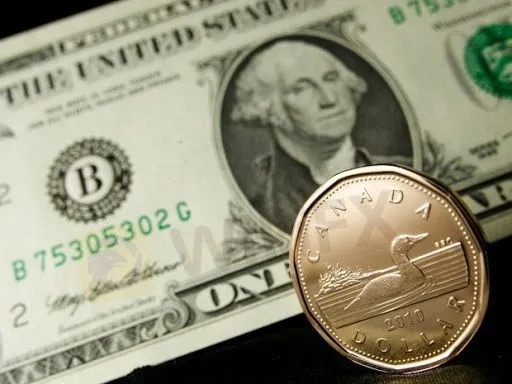Monthly FX Update | July 2023
Abstract:June, saw divergent economic outlooks. Initially, the US dollar was under pressure as many believed the Federal Reserve had completed its last rate hike for this cycle. However, this perception changed following the release of robust US economic data and hawkish projections in the FOMC dot-plot.

Economic Outlook and Summary
June, saw divergent economic outlooks. Initially, the US dollar was under pressure as many believed the Federal Reserve had completed its last rate hike for this cycle. However, this perception changed following the release of robust US economic data and hawkish projections in the FOMC dot-plot.
Furthermore, Chinas economic rebound from the pandemic has been disappointing, and ongoing tensions with the United States are expected to influence global risk sentiment in July. The latest PMI data from China indicates continued struggles in their economy, and market participants are hopeful that rumors of new stimulus packages being announced will have a positive impact and provide a boost to the global economy.
On July 21, the European Central Bank (ECB) is widely anticipated to announce a 25 basis points rate cut, indicating the potential for further monetary policy adjustments in response to the economic conditions.
The USD and Federal Reserve
The US dollar initially retreated in the first half of June but rallied towards the end of the month. The change in sentiment shifted from expecting rate cuts in the fourth quarter to anticipating two more rate increases, one in the current month and the other in September. This shift in sentiment is influenced by the remarkable resilience of the US economy.
During the first quarter, the economy grew at a rate of 2.0%, which was significantly higher than the expected 1.3% year-on-year growth. Despite inflation showing a decline, the rate of decrease is not considered fast enough for policymakers. As a result, bond traders increased the yield on the US 10-Treasury to 3.86% on July 4, up from a low of 3.60% observed in June.
The Canadian Dollar and Bank of Canada
The Canadian dollar climbed steadily throughout June, powered by the Bank of Canada‘s (BoC) somewhat surprising rate increase on June 7 and the FOMC’s decision to leave US interest rates unchanged. However, this trend is expected to be reversed in July, with the Fed likely to hike rates by 25 basis points (bp) while the BoC keeps rates unchanged.
The Quarterly Business Outlook Survey (BOS), which was released on June 30, showed weakness across the board. The BOS indicator fell from -1.07 in the last quarter to -2.15. (The Bank describes the BOS as “a summary measure of core questions in the BOS.”) This may be sufficient to keep the BoC on the sidelines, unless Canadas employment report (forecasting 20,000 jobs with an unemployment rate of 3.6%) turns out to be significantly stronger than expected.
Meanwhile, the odds for a Fed rate hike on July 22 are at 88.0%, which will support the USDCAD pair, indicating a range of 1.3100-1.3400 for July.
Oil Price
West Texas Intermediate traded choppily in the well-defined $67.00-$74.00/barrel range. Prices reached the peak at the beginning of June when Saudi Arabia announced a unilateral plan to cut oil production by 1.0 million barrels per day. However, prices quickly retreated due to both US recession fears and disappointment from Chinas sluggish economic rebound from Covid-zero policies. The price action was choppy for the rest of the month, with the prospect of higher US interest rates limiting gains.
Saudi Arabia announced an additional 1.0 million barrels per day (m/bpd) production cut beginning in August and was joined by Russia, which promised to cut its production by 500,000 barrels. The cuts should serve to reinforce the $67.00 floor and keep the focus on resistance in the $74.50-$75.00/barrel area.

Read more

Fed Holds Rates Steady! Yen Faces Growing Uncertainty
The Fed stays put but strikes a hawkish tone. The yen remains under pressure as market uncertainty deepens.

WikiFX’s Complimentary Protection Services Aim to Safeguard Investors' Legal Rights and Interests
Amid the increasingly complex forex market environment, WikiFX remains steadfast in its mission to provide global users with free, professional, and authentic forex rights protection support services.

Proposed ₦30 Billion Annual Pension Scheme Signals Major Reform Ahead
The government’s plan to distribute ₦30 billion in annual pensions could mark a turning point in civil servant welfare, sparking widespread market interest.

FXGT.com vs M4Markets: Which one is more suitable for you?
FXGT.com and M4Markets are two brokers that have a wealth of trading experience over many years. They attract global traders, each offering unique strengths. This article provides a side-by-side comparison of these brokers across essential categories, such as regulation, platforms, account types, fees, etc. For a personalized comparison, traders are encouraged to use the WikiFX comparison tool.
WikiFX Broker
Latest News
Danske Bank expects the European Central Bank to make its final interest rate cut in September.
Retirement Dreams Shattered: Don't Do This To Yourself!
EU Regulators Imposed Over €71M in Sanctions in 2024, ESMA Calls for Enforcement Convergence
No Regulation, Revoked Licence: Is Tradehall Safe to Use?
Philippines Sets Southeast Asia’s First Crypto Regulatory Framework
Tether Freezes $12.3 Million in USDT Over Money Laundering Concerns
MiCA Unlocks EU Crypto Market, but National Tensions Rise as Gemini and Coinbase Near Approval
FortuixAgent Review 2025: Is it Scam or Legit?
MetaTrader Support Ending July 2025: Update Now or Risk Losing Access
HYCM Broker Review 2025: A Comprehensive Overview
Rate Calc

